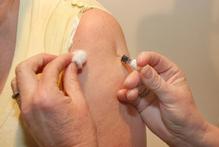OF THE
TIMES

"These unavoidable environmental hormone mimics come in a variety of disguises, from plastics to pesticides, from cleansers, solvents like TCE (trichloroethylene) and detergents to heavy metals like cadmium. Even breath samples from 350 New Jersey residents found perchloroethlyene in 93% of folks, benzene in 89%, trichloroethylene in 29% and numerous other carcinogens [Wallace L, et al, 'Concentrations of 28 volatile organic compounds in air and drinking water of 350 residents of New Jersey compared with concentrations in their exhaled breath', Journal of Occupational Medecine, 28:603-608, 1986]. Pollutants are ubiquitous and inescapable. And don't forget that benzene is a known cause of leukemia by itself, while trichloroethylene was the cause of the childhood leukemia epidemic where it contaminated drinking water in the small town of Woburn, Massachsetts. Just how many environmental pollutants that are known causes of leukemia does it take to produce leukemia in one person?"How many indeed! And how much longer until our elected representatives actually act in the public interest instead of what is obviously the interests of their corporate associations?
Comment: Pharmaceutical companies make billions from the sale of vaccines. Almost all vaccines given to the general public contain mercury. Mercury is a poison. That one study into the link between autism and has been discredited does nothing to explain the many cases where children developed the first signs of autism after receiving the MMR vaccine.
Are you willing to allow pharmaceutical companies to get rich by scaring you into taking or giving your children non-trial-tested and potentially dangerous vaccines?